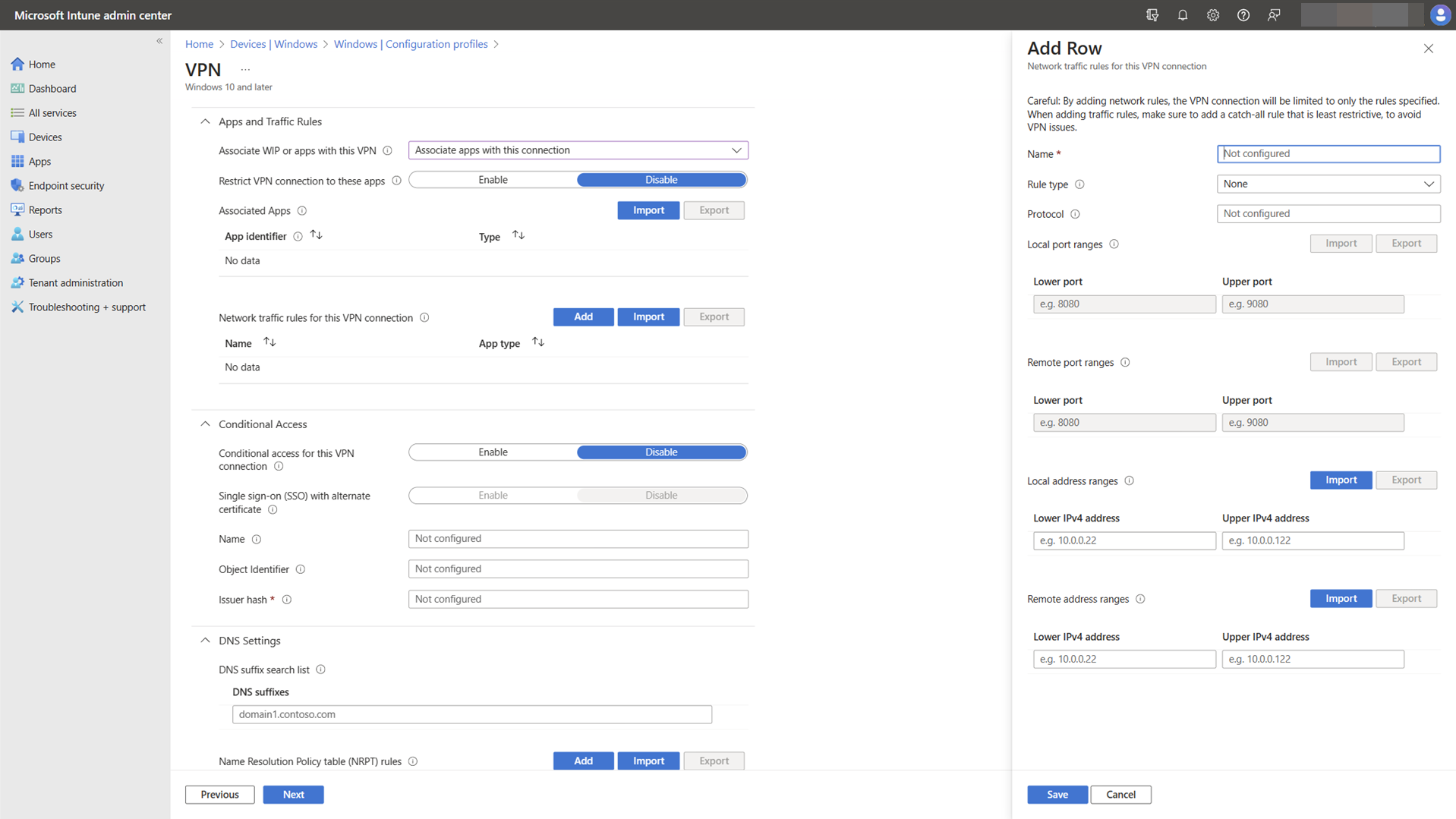Note
Access to this page requires authorization. You can try signing in or changing directories.
Access to this page requires authorization. You can try changing directories.
Hyper-V based containers and VPN
Windows supports different kinds of Hyper-V based containers, like Microsoft Defender Application Guard and Windows Sandbox. When you use a non-Microsoft VPN solution, the Hyper-V based containers may not be able to seamlessly connect to the internet, and configuration changes may be needed to resolve connectivity issues.
For example, read about the workaround for Cisco AnyConnect VPN: Cisco AnyConnect Secure Mobility Client Administrator Guide: Connectivity issues with VM-based subsystems.
Traffic Filters
Traffic Filters enables organizations to decide what traffic is allowed into the corporate network based on policy. IT admins can use Traffic Filters to apply interface-specific firewall rules to the VPN Interface.
There are two types of Traffic Filter rules:
- App-based rules consist of a list of applications that can be marked to only allow traffic originating from the apps to the VPN interface
- Traffic-based rules consist of 5-tuple policies (ports, addresses, protocol) that can be specified to only allow traffic matching the rules to go through the VPN interface
There can be sets of rules linked by OR. Within each set, there can be app-based rules and traffic-based rules.
All the properties within the set are linked by AND. The rules can be applied at a per-app level or a per-device level.
For example, an IT admin could define rules that specify:
- An HR App is allowed to go through the VPN and only access port 4545
- The Finance apps are allowed to through the VPN and only access the Remote IP ranges of 10.10.0.40 - 10.10.0.201 on port 5889
- All other apps on the device can only access ports 80 or 443
Configure traffic filters
See VPN profile options and VPNv2 CSP for XML configuration.
The following image shows the interface to configure traffic rules in a VPN Profile configuration policy, using Microsoft Intune.
LockDown VPN
A VPN profile configured with LockDown secures the device to only allow network traffic over the VPN interface. It has the following features:
- The system attempts to always keep the VPN connected
- The user can't disconnect the VPN connection
- The user can't delete or modify the VPN profile
- The VPN LockDown profile uses forced tunnel connection
- If the VPN connection isn't available, outbound network traffic is blocked
- Only one VPN LockDown profile is allowed on a device
Note
For built-in VPN, LockDown VPN is only available for the Internet Key Exchange version 2 (IKEv2) connection type.
Caution
Be careful when deploying LockDown VPN, as the resultant connection won't be able to send or receive any network traffic without the VPN connection being established.
